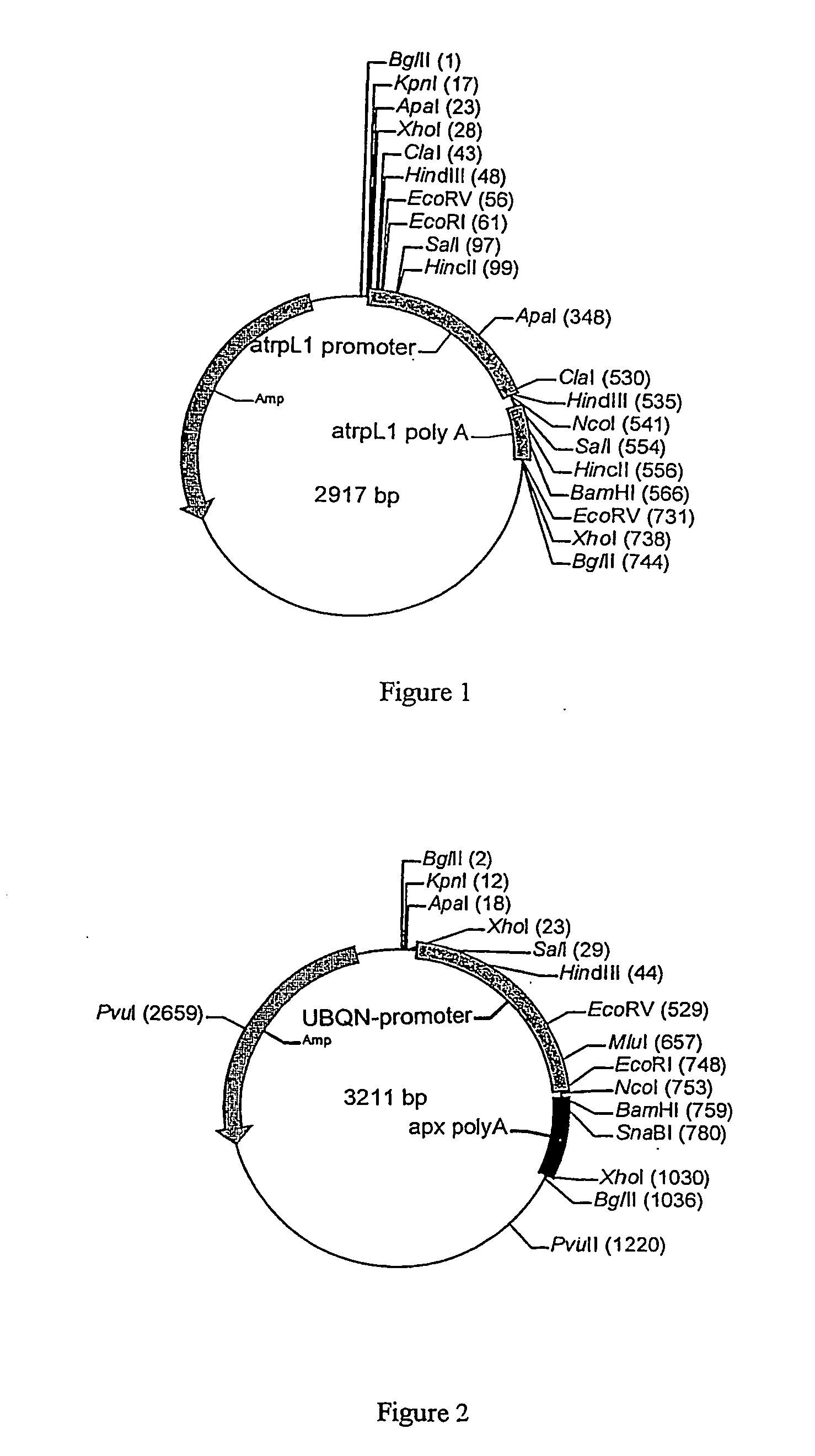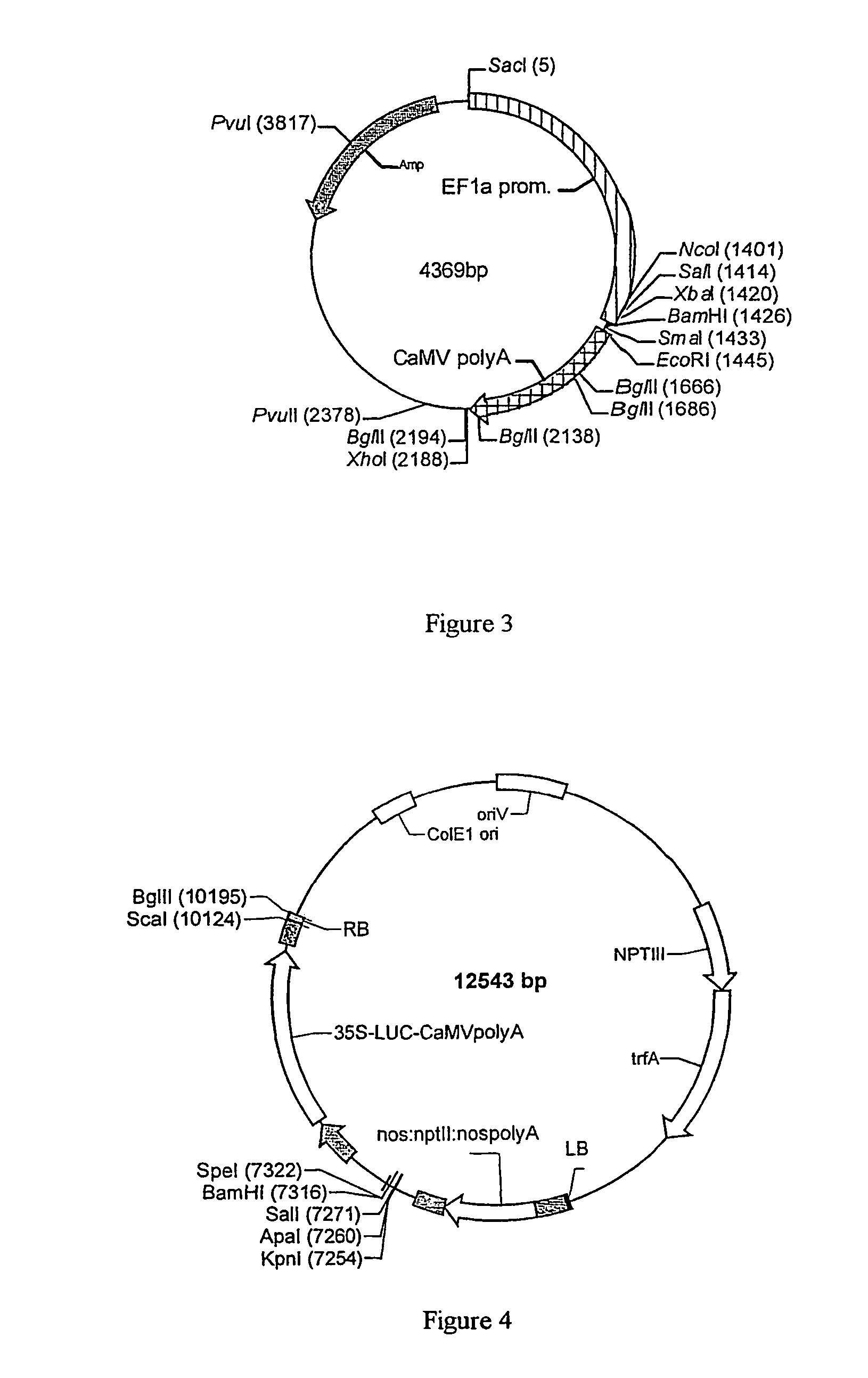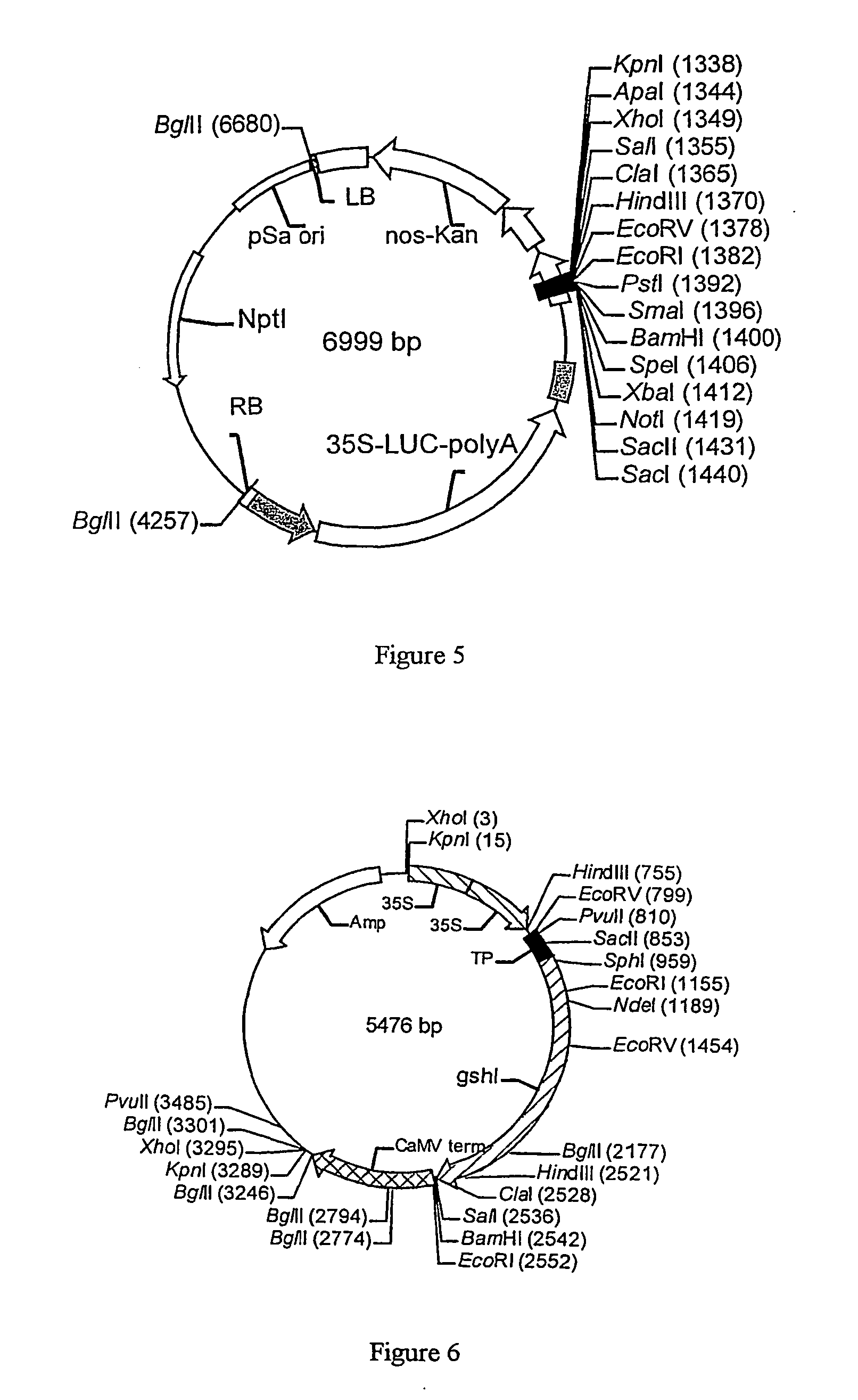Reducing oxidative stress of plants by increasing glutathione content
a technology of glutathione and plant oxidative stress, which is applied in the direction of biocide, plant growth regulator, enzyme, etc., can solve the problems of not being fully reproducible between lines, and being difficult to produce stable vectors containing multi-gene constructs for plants
- Summary
- Abstract
- Description
- Claims
- Application Information
AI Technical Summary
Problems solved by technology
Method used
Image
Examples
Embodiment Construction
[0104] 1. The Constructs
[0105] Two constructs were made for manipulation of expression of enzymes of glutathione metabolism and turnover in the chloroplast (pAFQ70.1) or in the cytosol (pAFQ70.2) of transgenic plants. In addition to the genes and cDNAs directly associated with manipulation of glutathione, a kanamycin resistance gene (nptII) and luciferase gene (luc) were introduced adjacent to the left and right T-DNA border sequences, respectively, to enable selection and easy identification of transgenic plants.
[0106] 1.1 Construction of the Promoter-PolyA Cassettes
[0107] 1.1.1 CaMV35S-CaMV PolyA Cassettes
[0108] The cassettes incorporating the CaMV35S (with duplicated enhancer region) and CaMV polyadenylation sequences were based on the plasmids pJIT117 (Guerineau et al 1988, Nucl Acids Res. 16, 11380) and pJIT163 (Guerineau et al, 1992; Plant Mol. Biol. 18, 815-818). Modifications to these constructs to facilitate cloning are described in the following sections.
[0109] 1.1.2 Const...
PUM
| Property | Measurement | Unit |
|---|---|---|
| Tm | aaaaa | aaaaa |
| pH | aaaaa | aaaaa |
| pH | aaaaa | aaaaa |
Abstract
Description
Claims
Application Information
 Login to View More
Login to View More - R&D
- Intellectual Property
- Life Sciences
- Materials
- Tech Scout
- Unparalleled Data Quality
- Higher Quality Content
- 60% Fewer Hallucinations
Browse by: Latest US Patents, China's latest patents, Technical Efficacy Thesaurus, Application Domain, Technology Topic, Popular Technical Reports.
© 2025 PatSnap. All rights reserved.Legal|Privacy policy|Modern Slavery Act Transparency Statement|Sitemap|About US| Contact US: help@patsnap.com



